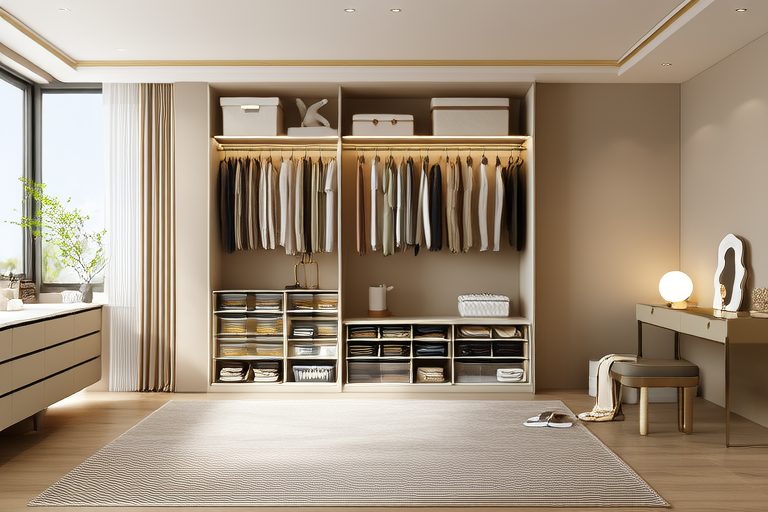The Ultimate Guide to Closet Makeover: Practical Ideas for Better Wardrobe Management
Introduction
A well-organized closet is not just about aesthetics; it’s about efficiency and peace of mind. A cluttered wardrobe can lead to wasted time, unnecessary purchases, and even stress. By transforming your closet into an organized haven, you can maximize space, reduce waste, and streamline your daily routine. This guide will walk you through practical ideas for better wardrobe management, helping you create a closet that reflects your personal style and enhances your lifestyle.
Understanding Your Needs
Before diving into the makeover, take some time to assess your current wardrobe. Identify your needs and preferences by asking yourself a few key questions:
1. What Do You Actually Wear?
Go through your clothes and be honest about what you wear frequently and what items have been untouched for months or years. Consider why certain pieces aren’t getting used—perhaps they don’t fit well, or maybe they’re no longer in style. This step is crucial because it helps you declutter and make room for more functional items.
2. What Are Your Storage Preferences?
Think about how you prefer to store your clothes. Some people prefer hanging their clothes, while others prefer folding them neatly on shelves. Consider factors like the height of your closet, the type of hangers you use, and the presence of drawers or shelves. Tailoring your storage solutions to your preferences ensures that your closet remains user-friendly.
3. How Much Space Do You Have?
Measure your closet space carefully. Knowing the dimensions will help you plan your layout effectively. If you have limited space, consider multi-functional solutions like over-the-door organizers or slim hangers.
Organizing Your Closet
Once you’ve identified your needs, it’s time to organize your closet. Here are some practical tips to get started:
1. Use Clear Labels and Bins
Labeling bins and sections of your closet makes it easier to find specific items quickly. For example, you could have separate bins for accessories, undergarments, and seasonal clothing. This system not only saves time but also keeps your closet tidy and accessible.
2. Invest in Quality Hangers
Quality hangers can make a big difference in keeping your clothes wrinkle-free and saving space. Choose hangers that match the shape of your garments. For instance, wooden hangers work well for delicate dresses, while padded hangers are ideal for coats and suits.
3. Utilize Vertical Space
Maximize vertical space by installing shelves or hooks high up on the walls. This can be particularly useful for storing out-of-season items or extra-long clothing pieces. Consider using over-the-door hooks for belts, scarves, and bags.
Implementing a Maintenance Routine
Maintaining an organized closet requires regular upkeep. Establishing a routine can help you stay on top of things and prevent clutter from accumulating.
1. Weekly Review
Set aside 10-15 minutes each week to review your closet. Check for any items that need mending, cleaning, or donating. This small habit ensures that your closet remains functional and tidy.
2. Seasonal Audits
Conduct a more thorough audit at the beginning and end of each season. This is a great time to reassess your wardrobe and make necessary adjustments. For example, you might want to donate summer clothes at the end of summer and bring out winter items.
3. Keep a Donation Bag Handy
Having a donation bag in your closet encourages you to regularly declutter. When you come across an item you no longer need, simply place it in the bag. Once the bag is full, donate the items to a local charity or thrift store.
Real-Life Case Study
Let’s look at a real-life case study to see how these principles can be applied.
Sarah’s Closet Makeover
Sarah had a small closet with limited space. She found herself constantly struggling to find her favorite outfits and ended up buying duplicates of items she already owned. After following the steps outlined above, here’s what she did:
- Assessment: Sarah went through her wardrobe and realized she had too many formal dresses and not enough casual wear.
- Organization: She installed slim hangers and over-the-door organizers. She also labeled bins for different categories of clothing.
- Maintenance: Sarah set a weekly review schedule and kept a donation bag handy. She also conducted a seasonal audit at the start and end of each season.
As a result, Sarah’s closet became much more manageable, and she was able to focus on building a wardrobe that truly reflected her lifestyle.
Conclusion
Transforming your closet into an organized and efficient space is a rewarding process that can significantly enhance your daily life. By understanding your needs, organizing your space thoughtfully, and maintaining a regular routine, you can achieve a closet that is both functional and stylish. Remember, the key to a successful closet makeover is consistency and adaptability. Start small, and gradually build up your system. With these practical ideas, you’ll be well on your way to enjoying a clutter-free and well-organized wardrobe.
Actionable Steps:
- Start with a thorough assessment of your current wardrobe.
- Invest in quality hangers and storage solutions that fit your space.
- Establish a maintenance routine to keep your closet tidy and functional.
By following these steps, you’ll not only save time and money but also enjoy the satisfaction of a well-organized closet that truly serves your needs.
